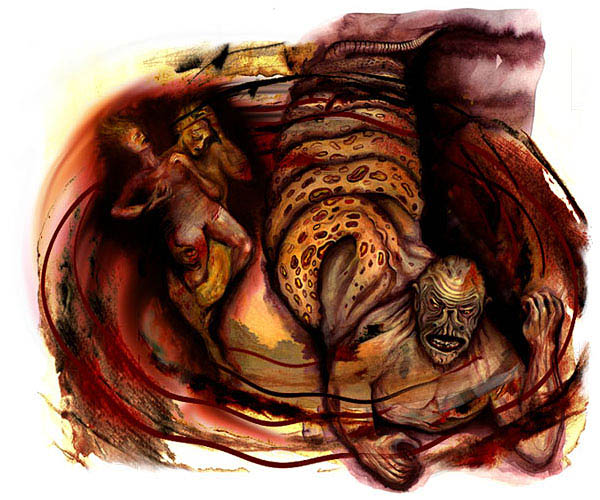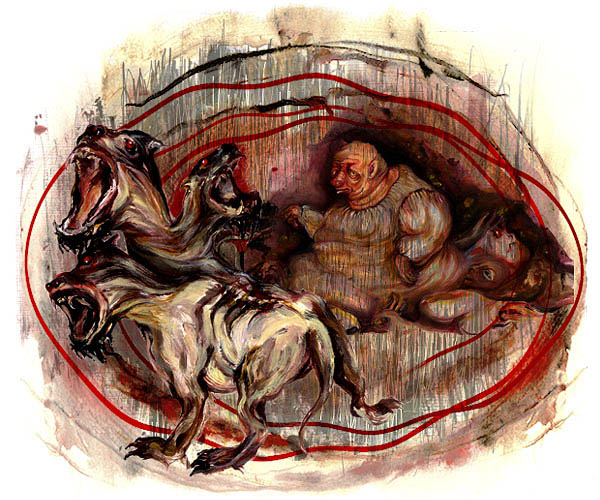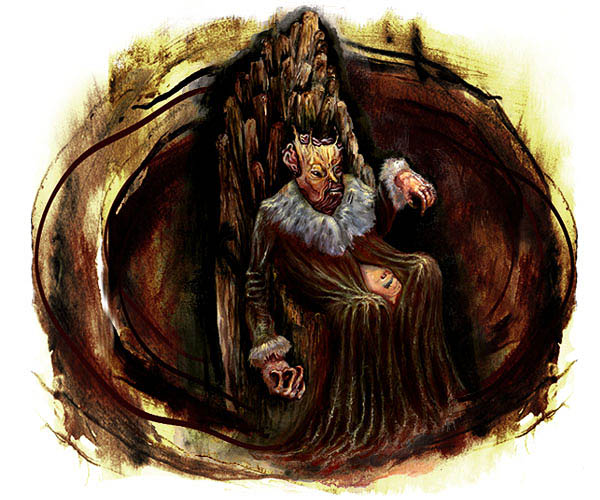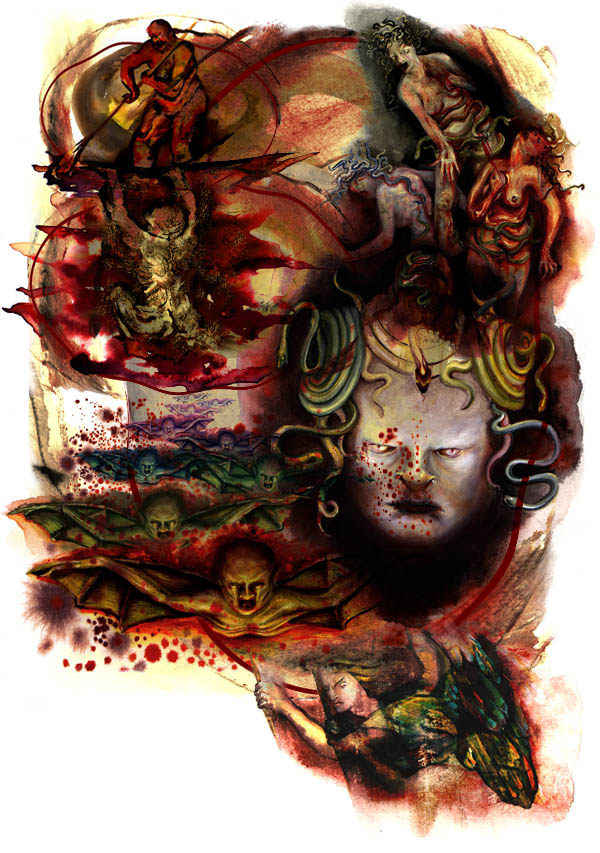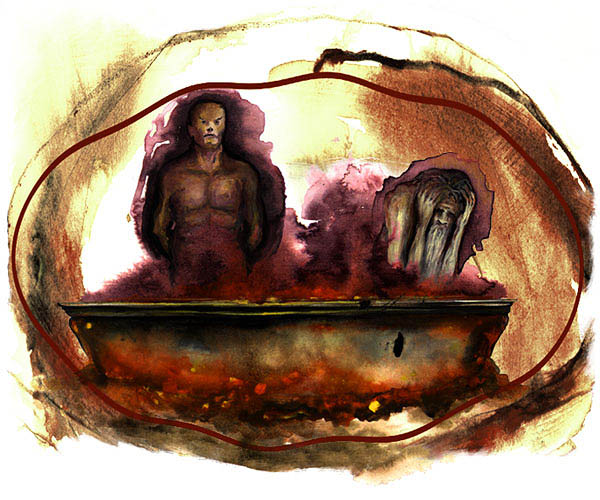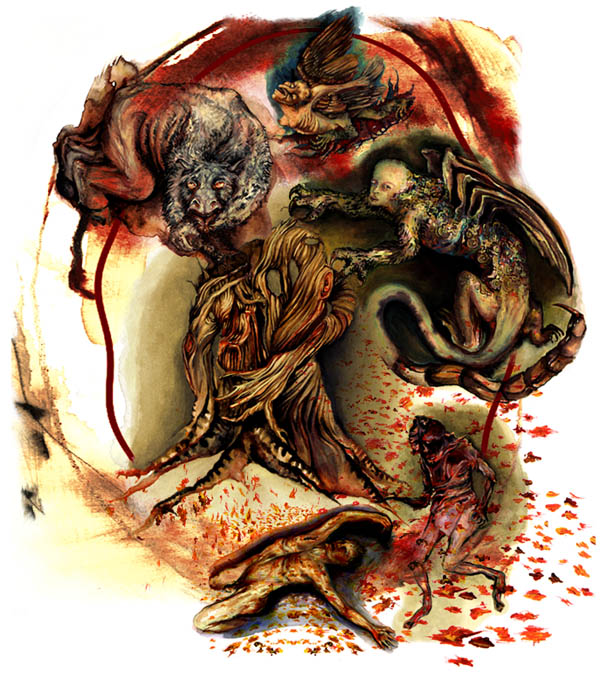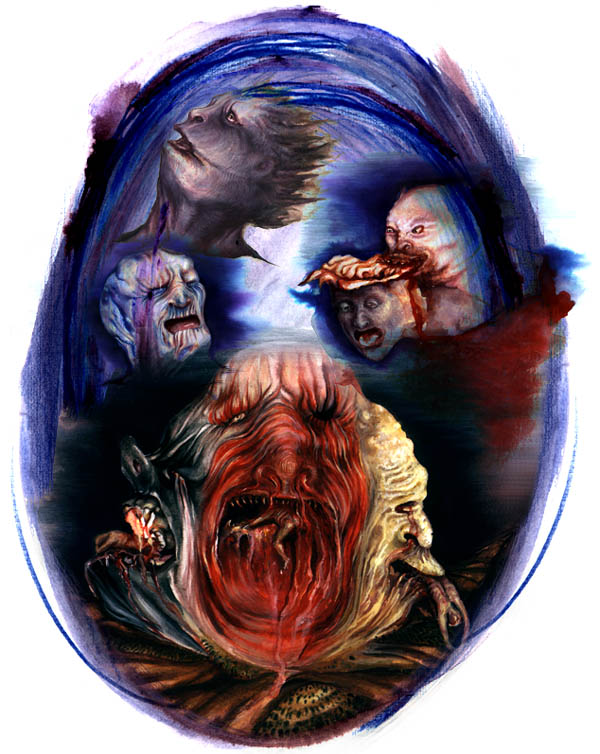Circles of hell - have you been bad lately?
Posted: 21 Jan 2011, 05:11
This posting is dedicated to educating people about death and what happens after you die if you have been an evil person on Earth. Do you believe in hell and life after death?
Each circle represents a level of hell dedicated to making death and eternity awful for the sinner. The greater your sin, the deeper you go into hell and the worse your punishment.
Warning - some of the later levels have very gruesome punishments for the sinners.

First Circle
First circle (Limbo)In Limbo reside the unbaptized and the virtuous pagans, who, though not sinful, did not accept Christ. They are not punished in an active sense, but rather grieve only because of their separation from God, without hope of reconciliation. Limbo shares many characteristics with the Asphodel Meadows; thus the guiltless damned are punished by living in a deficient form of Heaven. Without baptism ("the portal of the faith that you embrace"[5]) they lacked the hope for something greater than rational minds can conceive. Limbo includes green fields and a castle with seven gates to represent the seven virtues, the dwelling place of the wisest men of antiquity, including Virgil himself, as well as the Islamic philosopher Averroes and the Persian polymath Avicenna. In the castle Dante meets the poets Homer, Horace, Ovid, and Lucan, the Amazon queen Penthesilea, the mathematician Euclid, the philosophers Socrates and Aristotle, and many others, including Julius Caesar in his role as Roman general ("in his armor, falcon-eyed"[6]). Interestingly, he also sees Saladin in Limbo (Canto IV). Dante implies that all virtuous non-Christians find themselves here, although he later encounters two (Cato of Utica and Statius) in Purgatory and two (Trajan and Ripheus) in Heaven.
In this Canto, Virgil mentions to Dante various figures from the Old Testament, including Noah, Abraham, Moses, and David, and states that they were confined to this circle until the death of Christ ("when I beheld a Great Lord enter here; / the crown he wore, a sign of victory."[7]). Following this Harrowing of Hell, these good souls were then taken by Christ into Heaven. This widespread medieval belief was based on such biblical texts as 1 Peter 3:19.[8]
Beyond the first circle, all of those condemned for active, deliberately willed sin are judged by Minos, who sentences each soul to one of the lower eight circles by wrapping his tail around himself a corresponding number of times (Minos initially hinders the poets' passage, until rebuked by Virgil). The lower circles are structured according to the classical (Aristotelian) conception of virtue and vice, so that they are grouped into the sins of incontinence, violence, and fraud (which for many commentators are represented by the leopard, lion, and she-wolf[9]). The sins of incontinence—weakness in controlling one's desires and natural urges—are the mildest among them, and, correspondingly, appear first, while the sins of violence and fraud appear lower down.
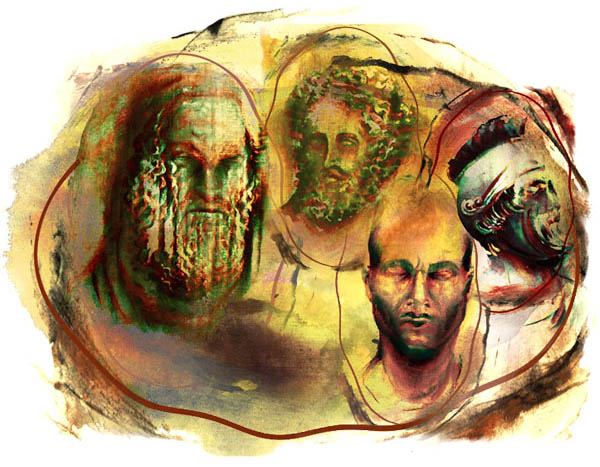
Each circle represents a level of hell dedicated to making death and eternity awful for the sinner. The greater your sin, the deeper you go into hell and the worse your punishment.
Warning - some of the later levels have very gruesome punishments for the sinners.

First Circle
First circle (Limbo)In Limbo reside the unbaptized and the virtuous pagans, who, though not sinful, did not accept Christ. They are not punished in an active sense, but rather grieve only because of their separation from God, without hope of reconciliation. Limbo shares many characteristics with the Asphodel Meadows; thus the guiltless damned are punished by living in a deficient form of Heaven. Without baptism ("the portal of the faith that you embrace"[5]) they lacked the hope for something greater than rational minds can conceive. Limbo includes green fields and a castle with seven gates to represent the seven virtues, the dwelling place of the wisest men of antiquity, including Virgil himself, as well as the Islamic philosopher Averroes and the Persian polymath Avicenna. In the castle Dante meets the poets Homer, Horace, Ovid, and Lucan, the Amazon queen Penthesilea, the mathematician Euclid, the philosophers Socrates and Aristotle, and many others, including Julius Caesar in his role as Roman general ("in his armor, falcon-eyed"[6]). Interestingly, he also sees Saladin in Limbo (Canto IV). Dante implies that all virtuous non-Christians find themselves here, although he later encounters two (Cato of Utica and Statius) in Purgatory and two (Trajan and Ripheus) in Heaven.
In this Canto, Virgil mentions to Dante various figures from the Old Testament, including Noah, Abraham, Moses, and David, and states that they were confined to this circle until the death of Christ ("when I beheld a Great Lord enter here; / the crown he wore, a sign of victory."[7]). Following this Harrowing of Hell, these good souls were then taken by Christ into Heaven. This widespread medieval belief was based on such biblical texts as 1 Peter 3:19.[8]
Beyond the first circle, all of those condemned for active, deliberately willed sin are judged by Minos, who sentences each soul to one of the lower eight circles by wrapping his tail around himself a corresponding number of times (Minos initially hinders the poets' passage, until rebuked by Virgil). The lower circles are structured according to the classical (Aristotelian) conception of virtue and vice, so that they are grouped into the sins of incontinence, violence, and fraud (which for many commentators are represented by the leopard, lion, and she-wolf[9]). The sins of incontinence—weakness in controlling one's desires and natural urges—are the mildest among them, and, correspondingly, appear first, while the sins of violence and fraud appear lower down.

